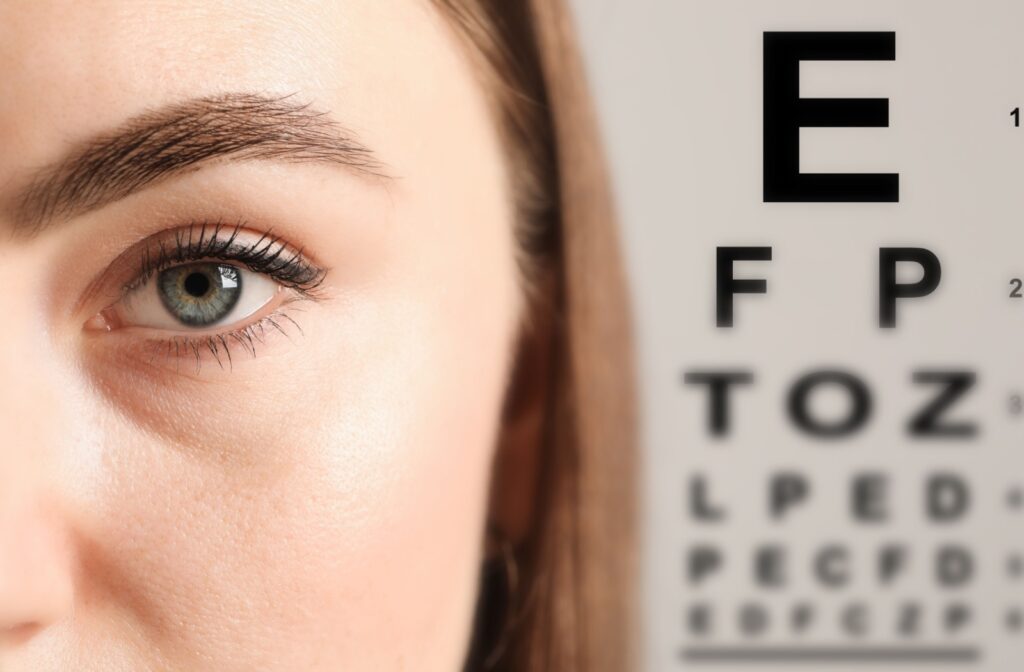Blurred vision can make everyday activities—from reading road signs to enjoying a good book—feel unnecessarily challenging. If you or someone in your family has been told you have myopia or astigmatism, understanding the differences between these 2 common vision conditions can make a world of difference in managing your eye health.
Here’s the key distinction: Myopia affects your ability to see distant objects clearly, while astigmatism can distort vision at all distances due to an irregular corneal shape.
What Is Myopia?
Commonly referred to as nearsightedness, myopia occurs when the eyeball is too long, or the cornea (the clear, dome-shaped surface of your eye) is too curved, causing light to focus in front of the retina instead of directly on it. This leaves distant objects looking blurry while close-up vision remains clear.
While the exact cause of myopia is still under study, experts believe both genetics and lifestyle factors play a significant role. Children with one or both parents who have myopia are at greater risk, and activities like extended screen time or a lack of outdoor play may contribute as well.
Myopia can make tasks like reading distant signs or recognizing faces challenging. Signs of myopia include:
- Blurry vision when looking at faraway objects
- Squinting to see clearly
- Eye discomfort or headaches after focusing on distant objects
- Kids may sit closer to televisions or struggle to see the board during class
Treating Myopia
Myopia typically first presents in children and worsens as they age. The earlier we intervene, the more of their vision we can preserve. For adults with myopia, we can try to correct these changes and adjust their vision toward 20/20. Effective correction methods for myopia include:
- Prescriptive Glasses or Contacts: There’s nothing like a classic. Whether you like frames or the convenience of contact, these lenses adjust how light focuses onto the retina to correct clarity.
- Myopia Control: Treatments like orthokeratology, specialty lenses, or atropine eye drops can help slow myopia’s progression.
- Laser Surgery: Options like LASIK can permanently reshape the cornea to correct blurred distance vision.
What Is Astigmatism?
Astigmatism is a type of refractive error caused when the cornea or the lens inside your eye has an irregular shape. Instead of being perfectly round, like a basketball, an eye with astigmatism is shaped more like a football. This uneven curvature prevents light from focusing properly on the retina, resulting in blurry or distorted vision.
Astigmatism is often present at birth and can run in families. However, it can also be caused by:
- Eye injuries
- Surgeries that impact the cornea
- Eye conditions such as keratoconus, where the cornea thins and bulges over time
Contrary to popular belief, astigmatism is not caused by reading in dim lighting or sitting too close to the TV.
Symptoms of astigmatism include:
- Blurry or warped vision at varying distances
- Eye strain or discomfort after prolonged focus
- Frequent headaches
- Difficulty seeing fine details clearly
Often, these symptoms are mild and go unnoticed until a comprehensive eye exam uncovers the issue.
How Do Optometrists Treat Astigmatism?
Luckily, there are several effective ways to correct astigmatism:
- Glasses or Contact Lenses: Glasses with specific cylindrical lenses or toric contacts can counteract the uneven curvature of the cornea or lens.
- Orthokeratology (Ortho-K): Special rigid contacts can temporarily reshape the cornea when worn overnight.
- Laser Surgery: Laser procedures like LASIK or PRK offer a permanent solution by reshaping the cornea for improved clarity.
The Difference Between Astigmatism & Myopia
Both astigmatism and myopia are refractive errors, but they come with distinct differences:
- Vision: Myopia causes distant objects to appear blurry but does not impact close-up vision. Meanwhile, astigmatism distorts vision at all distances.
- Cause: Myopia is due to an elongated eyeball or steep corneal curve, while astigmatism arises from an irregular corneal or lens shape.
- Treatment: Both conditions can be corrected using glasses, contacts, or surgeries. However, specialized rigid or toric lenses may be more comfortable for people with astigmatism, whereas standard lenses may suffice for myopia.
It’s worth noting that many people experience both myopia and astigmatism simultaneously. A proper eye exam is crucial to understanding your unique eye health and identifying the best course of treatment.
Debunking Common Myths
Misinformation often surrounds astigmatism and myopia. We don’t want to leave you asking questions, so here are two common myths debunked:
- “Astigmatism always worsens with time.”
This isn’t necessarily true. While changes in corneal shape may occur as you age, astigmatism often remains stable for many years.
- “Severe myopia guarantees future blindness.”
Myopia may increase the risk of certain complications, like retinal detachment, but proactive, routine eye care helps manage these risks effectively. Your optometrist can help you take control of your eye health with confidence!
Our Tips for Healthy Vision
Whether you’re dealing with astigmatism, myopia, or both, there are simple habits you can adopt to maintain good eye health:
- Spend time outdoors each day. It’s especially important for kids to help slow the progression of myopia.
- Adopt the 20-20-20 rule to reduce eye strain from screens (take a 20-second break to look at something 20 feet away every 20 minutes).
- Book regular eye exams so we can address vision changes early and effectively.
Small, consistent actions can go a long way in supporting your vision for years to come.
Look Forward to Clear Vision
If blurry vision is interfering with your quality of life, now is the time to take action.
At Stoney Creek Optometry, we’re passionate about providing personalized care that helps you see the world in focus. From precise diagnoses to customized treatment options, we’re here to guide you every step of the way.
Book your comprehensive eye exam today and start your path toward clearer, more comfortable vision. Your future is looking brighter already.






















